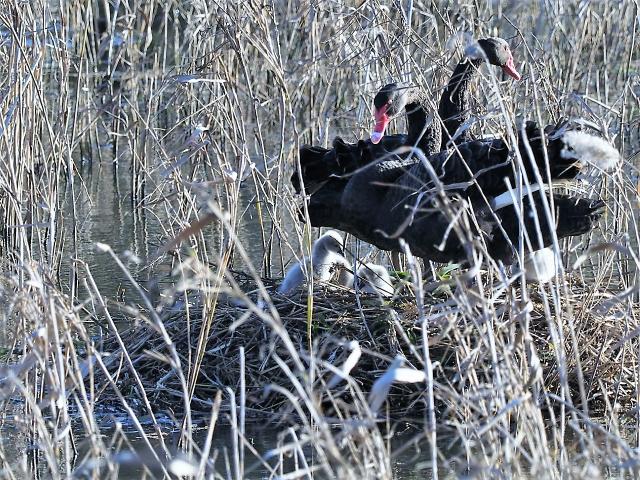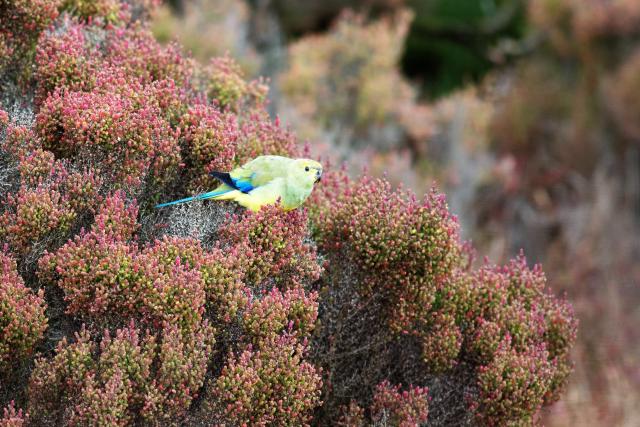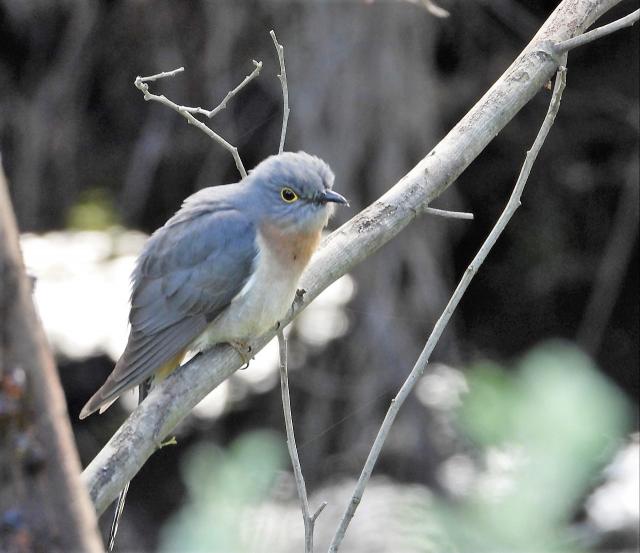The only outing I have had over the past few weeks was a trip to Western Treatment Plant with Tom and Angus.
It was so lovely to be there despite the freezing winds. The highlights were seeing a few white-bellied sea eagles, as well as a monarch butterfly, a small flock of blue-winged parrots and four red-necked stints.
It won’t be long until the stints are joined by hundreds of migratory waders that have flown from the northern hemisphere.
Locally, beach-nesting birds such as pied oystercatchers and hooded plovers are beginning to nest, with the first hoodie nest reported on the Eyre Peninsula (South Australia), found on July 28.
It won’t be long until the Bellarine Peninsula hoodies are nesting on our beautiful beaches.
I received an email from Jan, who spotted a fan-tailed cuckoo while she was walking along the Barwon River near Wandana Heights in Geelong. It was the first time Jan had seen one of these cuckoos so she was very pleased when it sat long enough for a photo.
This bird has a distinctive trilled call that for me heralds the start of spring. They inhabit forests and woodlands during the spring and early summer breeding season.
I received an email from Carole, who was walking along the Werribee River with a group of birders and was followed by a curious fan-tailed cuckoo who was singing.
Carole also visited Port Henry early one morning, and while looking over Corio Bay was amazed to see a huge line of what she first thought of as being ducks. The water was as still as a mill pond and as she gazed at the huge flotilla gradually a sea mist rolled in.
She managed to get a few photos and what she thought of as small ducks turned out to be over 100 hoary-headed grebes. The Australian Bird Guide says large flocks can be seen on sheltered coastal waters but even so Carole was amazed at the numbers of these birds.
I received an email from Kevin, who photographed a little grassbird in a pond at Breamlea. He also took some photos of a male superb fairy wren at Rice Reserve. Kevin said there were also reports of a pair of crested shrike-tits and a flame robin at Rice Reserve by another photographer that Kevin spoke to, but Kevin did not spot these birds.
I received an email from Nick, who has been walking along the southern boundary of the Ocean Grove football oval on Shell Road with his young son, where they spotted a small parrot eating grass seeds, and his first thought was “that’s a budgerigar”.
The bird was smaller than the other parrots that he had seen around, and had quite a dark green colouring, with some darker/black feathers across its wings. Without a photo it’s hard to know what bird this was, as it could be an escaped caged budgerigar, or it also could be a female red-rumped parrot.
I also heard from Alan, who reported that there’s a pair of black swans nesting in the grasses
towards the eastern end of the Blue Waters Lake. He spotted one swan with four cygnets cruising around the nesting area. It was very hard for Alan to get a decent photo with the strong wind blowing the grasses to and fro making focussing difficult. Two of the cygnets hitched a ride on the adult bird’s back, whilst the other two paddled in close proximity and then they all returned to the nest.
Alan wondered whether there were more eggs in the nest as the other adult swan remained on the nest until the family returned, and then it went for a paddle. In view of this swan family requiring care and protection, if anyone is walking a dog at Blue Waters Lake please ensure it’s on a lead.









